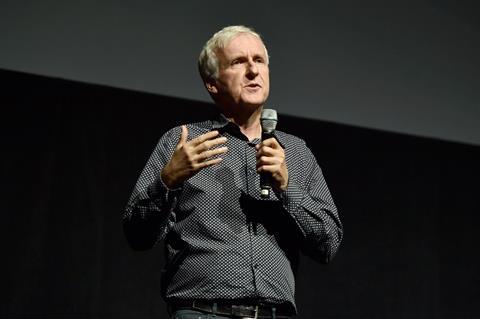
James Cameron has spoken about the Titan submersible tragedy that according to the US Coast Guard has claimed the lives of all five on board after a “catastrophic implosion”.
Cameron, the Titanic and Avatar franchise director and a veteran underwater explorer, told ABC News implosion was the “nightmare” everyone in the deep sea exploration community lives with in the back of their minds.
“Many people in the community were very concerned about this sub and a number of the top players in the deep submergence engineering community even wrote letters to the company [vessel operator OceanGate] saying what they were doing was too experimental to carry passengers and needed to be certified and so on.”
He continued, “I’m struck by the similarity of the Titanic disaster itself, where the captain was repeatedly warned about ice ahead of his ship and yet he steamed at full speed into an ice field on a moonless night and many people died as a result.
“For a very similar tragedy where warnings went unheeded to take place at the same exact site with all the diving that’s going on all around the world, is astonishing. It’s really quite surreal.”
The filmmaker added, “As a submersible designer myself – I designed and built a sub to go to the deepest place in the ocean, three times deeper than Titanic – I understand engineer problems associated with building this type of vehicle and all the safety protocols that you have to go through.”
The Titan expedition departed Newfoundland, Canada, last Friday (June 16) carrying a pilot and four passengers. It made its initial dive on Sunday to the Titanic wreck, which lies some 12,500ft (3,810m) below the North Atlantic, roughly 900 miles East of Cape Cod.
Concerns mounted after communications between Titan and the surface vessel were lost less than two hours into the dive. A massive search and rescue operation was mounted on Monday in a race to find the vessel before its oxygen supply expired. On Thursday the operation found debris near the Titanic containing pieces of the Titan, which the US Coast Guard said was consistent with pressure loss inside the vessel and implosion. The five on board would have died immediately.
“I’ve been down there may times,” said Cameron. “I know the wreck site very well. I’ve made 33 dives. I actually calculated I’ve spent more time on the ship than the captain did back in the day.
“It’s absolutely critical for people to really get the take-home message from this: deep submergence diving is a mature art. From the 60s, where there were a few accidents, nobody was killed, until now is more time than between Kitty Hawk and the fight of the first 747.
“We have improved [safety] drastically over that period of time and the certification protocols that all other deep submergence vehicles except this one that carry passengers, especially paying passengers, all over the world: in tropical waters, deep coral reefs, other wreck sites and so on… the safety record is the gold standard, absolutely – not only no fatalities but no major incidents requiring all these assets to converge to a site.”
In March 2012 Cameron reached the deepest part of the Mariana Trench in the Deepsea Challenger, a submersible he built with a team. It was a record dive to a depth of 35,787ft (10,908m).
Among the five people on board the Titan was Paul-Henry Nargeolet, a 77-year-old former French Navy diver and Titanic wreck expert who was a friend of Cameron’s. “For him to have died in this way is almost impossible for me to process,” the filmmaker said.
The others on board were OceanGate chief executive Stockton Rush, 61; British adventurer Hamish Harding, 58; and British-Pakistani businessman Shahzada Dawood, 48, and his 19-year-old son Suleman Dawood.






















No comments yet